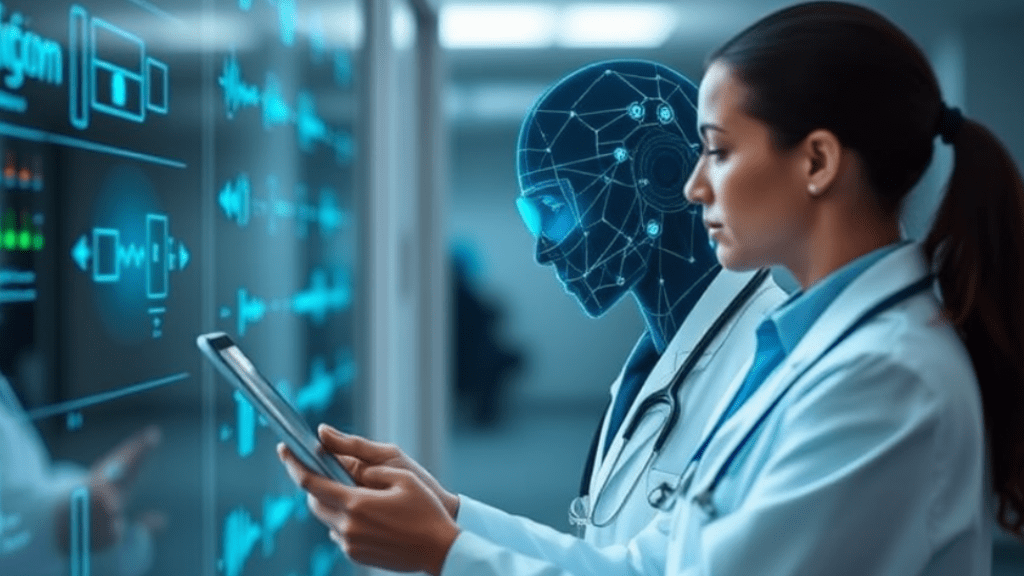
The Digital Doctor is In: AI and Telemedicine Redefine Healthcare
The healthcare industry is undergoing a seismic shift fueled by artificial intelligence (AI) and telemedicine.

Almost everything we use daily, including vehicles, computers, coffee makers, and children’s toys, is made by manufacturers. It makes sense that manufacturing is sometimes referred to as a fundamental pillar of civilization. Over the years, manufacturing has changed, moving from human-centered techniques to assembly lines that rely heavily on machinery to the highly automated facilities we are starting to see more of today. And the sector is still developing.
Here are a few trends in Manufacturing Industries:
The metaverse and augmented reality
Enhanced product design, better production planning, enhanced human capabilities on assembly lines, and more immersive training will all be made possible by extended reality technologies like augmented and virtual reality. Manufacturers will have additional opportunities when more of the world enters the metaverse.
Predictive Management
Predictive maintenance, as used in the manufacturing industry, is the process of identifying machine and component failure patterns using sensor data and artificial intelligence (AI). The theory is that manufacturers may take preventative action and maintain their equipment more efficiently by knowing when a machine or component is likely to break. Sensors have been employed on older motors and transmissions.
Computerized Twins
For instance, in a manufacturing environment, a digital twin may be used to mimic the dimensions of a new product or make a digital replica of the machinery on the factory floor to observe how the equipment functions under various circumstances. A whole supply chain can be visualized and simulated using digital twin technology. One can see how disruptive this trend could be by considering that, by 2023, as many as 70% of manufacturers may be employing digital twins to carry out simulations and evaluations.
5G & edge computing
Manufacturers will be able to quickly connect their IIoT technology and make use of the data gathering and data processing capabilities within devices like smart machines and sensors thanks to the fifth generation (5G) of mobile data network technology. Manufacturers can set up a private 5G network on their property, providing them with extremely fast communication rates without the use of wires and significantly enhanced data security.
Blockchain technology and Web3
Manufacturers will have the chance to better monitor their supply networks and even automate many of the transactions along their supply chains with the rise of Web3 and distributed computing technology like blockchains and NFTs (non-fungible tokens). Future manufactured goods will frequently be sold along with their NFT digital certificates.
3D printing
Manufacturers will increasingly be able to produce goods using 3D printing techniques, which use fewer materials and generate less waste than conventional manufacturing methods. This is because 3D printing is becoming more affordable, effective, and scalable. 3D printing will also usher in a new era of personalization because technology allows for the production of individualized goods without concern for economies of scale. Additionally, the ability to quickly prototype thanks to 3D printing might promote creativity.
The rise of intelligent, interconnected IoT devices is transforming not only how but also what kinds of things are made. There appear to be “smart” versions of everything these days, from vacuum cleaners to toilets, and the demand for smart devices is on the rise. Customers will favor products that are recyclable, reusable, and sustainable in greater numbers. Manufacturers will consequently need to look at new ways to provide clients with the intelligent products they demand. Manufacturers will also need to consider the reality that the waste culture of the past is, hopefully, coming to an end.

The healthcare industry is undergoing a seismic shift fueled by artificial intelligence (AI) and telemedicine.

The healthcare and pharmaceutical sectors are navigating a transformative period, with technological advancements reshaping patient care, operational efficiencies, and strategic growth.

In the world of business, financial wizards wave their wands to conjure profits and success. But behind every great money magician …

Insurtech is not just making waves in the insurance industry—it’s rewriting the rulebook. As technology-driven startups disrupt …